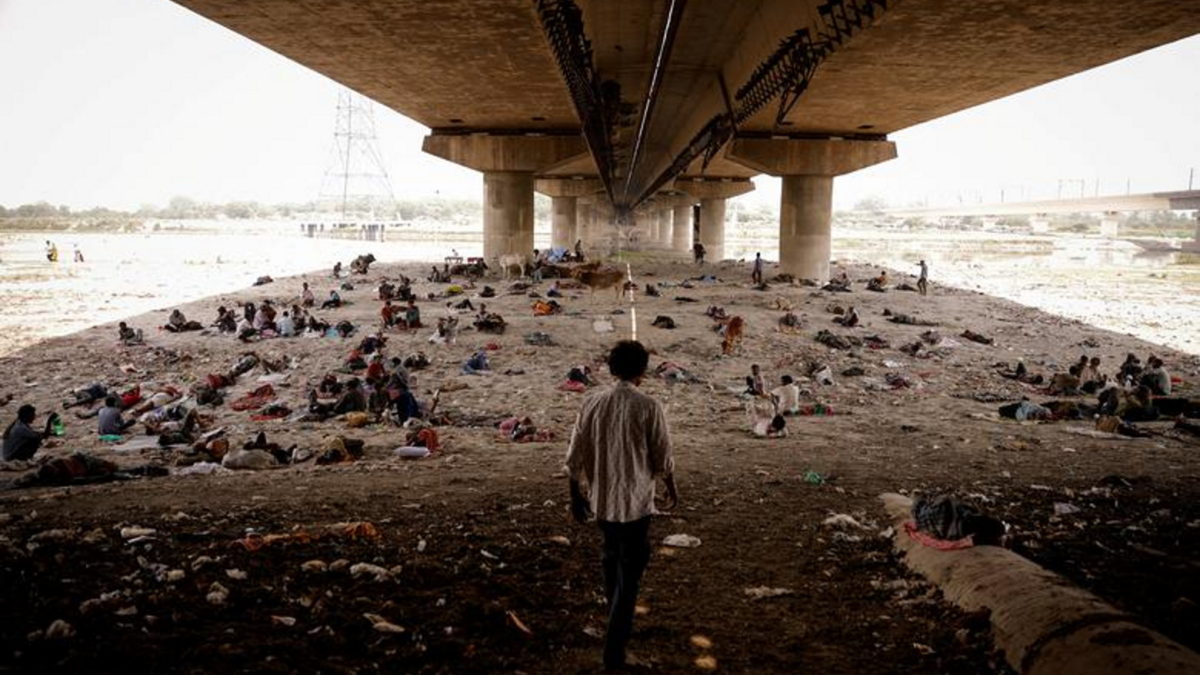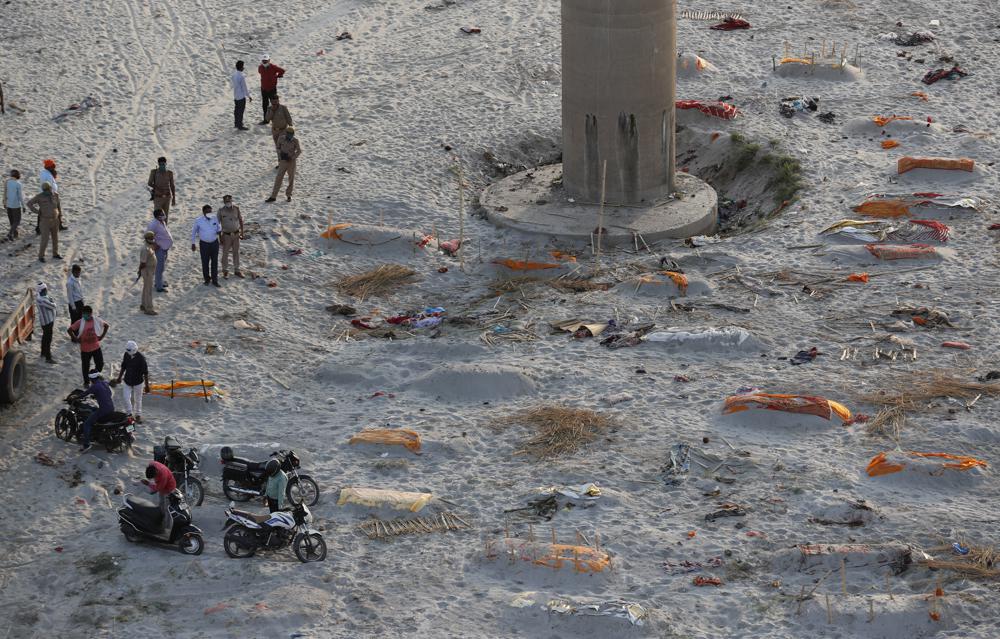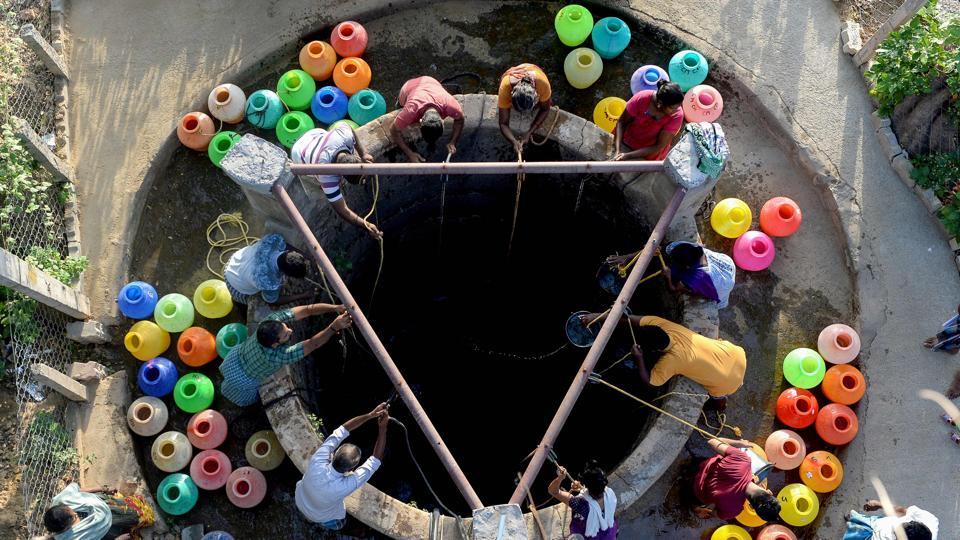India health system cracks under strain of exponential surge in coronavirus cases – Oxygen supply disruption kills 22 patients – “A tsunami has indeed hit us now”
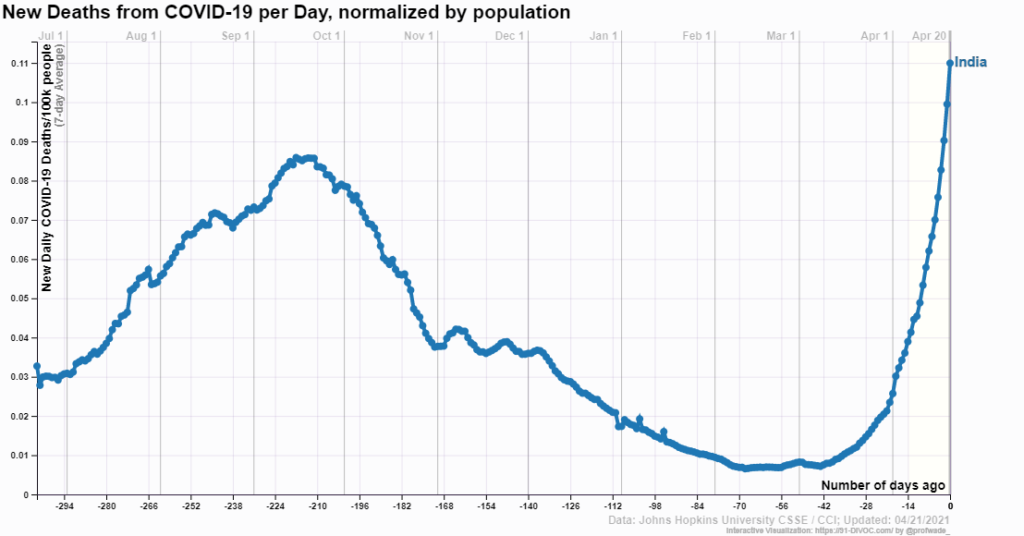
By Jeffrey Gettleman, Suhasini Raj, and Hari Kumar
21 April 2021
NEW DELHI (The New York Times) – India’s health care system shows signs of buckling under the strain of a second wave of coronavirus infections, as the authorities reported nearly 300,000 new cases on Wednesday and an accident at a Covid-19 hospital killed more than 20 people.
The accident happened at a hospital in the western state of Maharashtra after a leak in the hospital’s main oxygen tank stopped the flow of oxygen to dozens of critically ill people. Televised images showed family members wailing in the wards and nurses frantically pounding on the chests of some patients.
All week, hospitals across India have been warning about an acute oxygen shortage. Many hospital officials said they were just a few hours away from running out.
“Nobody imagined this would happen,” said Subhash Salunke, a medical adviser to the Maharashtra government.
India is now home to the world’s fastest-growing Covid-19 crisis, reporting 294,000 new infections on Wednesday and more than 2,000 deaths. As supplies of hospital beds, oxygen and vaccines run low, criticism of the government is building.

In a televised address on Tuesday, Prime Minister Narendra Modi urged people to be more careful but said that lockdowns were a last resort. States and cities are increasingly going into lockdown on their own, and critics say the government’s mixed messages are making matters worse.
As examples, they point to recent political rallies held by Mr. Modi that have drawn thousands, as well as the government’s decision to allow an enormous Hindu festival to continue despite signs that it has become a superspreader event. A few days ago, Mr. Modi indicated that he wanted Hindu worshipers to stay away from this year’s festival, called the Kumbh Mela, which is held on the banks of the Ganges river considered sacred by many Hindus.
But the worshipers keep coming — 70,000 showed up on Wednesday for a holy dip, bringing the total to more than 10 million since the festival began in January — and government officials on the ground are doing little to stop them.
Event organizers said that worshipers were required to produce a negative coronavirus test result or be tested on the spot, but they also acknowledged that with such huge crowds, some participants could have slipped in without being tested. Photographs show a sea of worshipers packed together in the gray waters of the river, many without masks. More than 1,000 tested positive at the site in just 48 hours, according to reports by the Indian news media. [more]
India’s Health System Cracks Under the Strain as Coronavirus Cases Surge

Covid-19 in India: Why second coronavirus wave is devastating
By Vikas Pandey and Shadab Nazmi
21 April 2021
DELHI (BBC News) – Rajeshwari Devi, 58, died on Sunday after waiting for two days to get uninterrupted oxygen, an ambulance, and a bed in a Covid-19 hospital.
She kept waiting and gasping but it was too late by the time help arrived. She was taken to a hospital emergency room on 16 April after her oxygen saturation level dropped. Her CT scan showed that she had developed severe pneumonia.
But without her Covid report the hospital refused to admit her. She spent around 36 hours in the emergency room on oxygen support in the northern Indian district of Robertsganj. The staff there told her family they were running out of oxygen and she needed to be moved to a bigger hospital but there was no ambulance or any promise of a bed.
I said in February that Covid had not gone anywhere and a tsunami would hit us if urgent actions were not taken. Sadly, a tsunami has indeed hit us now. A false sense of normalcy crept in and everybody, including people and officials, did not take measures to stop the second wave.
Dr. A. Fathahudeen, Kerala state’s Covid taskforce
The desperate family took her in their car to a hospital where a bed had become available after the intervention of a politician. She had no oxygen support in the car – she died minutes before she could be admitted to hospital.
Ashish Agrahari, her son, says his mother “would have had a chance at survival if treatment was given in time”.
Heartbreaking stories such as this are coming in from across India as a second Covid wave wreaks havoc. Data suggests that this wave is proving to be more infectious and deadlier in some states, although India’s death rate from the virus is still relatively low.
But the county’s healthcare system is crumbling amid the surge in cases – doctors say it’s hard for them to “see the light at the end of the tunnel this time”.
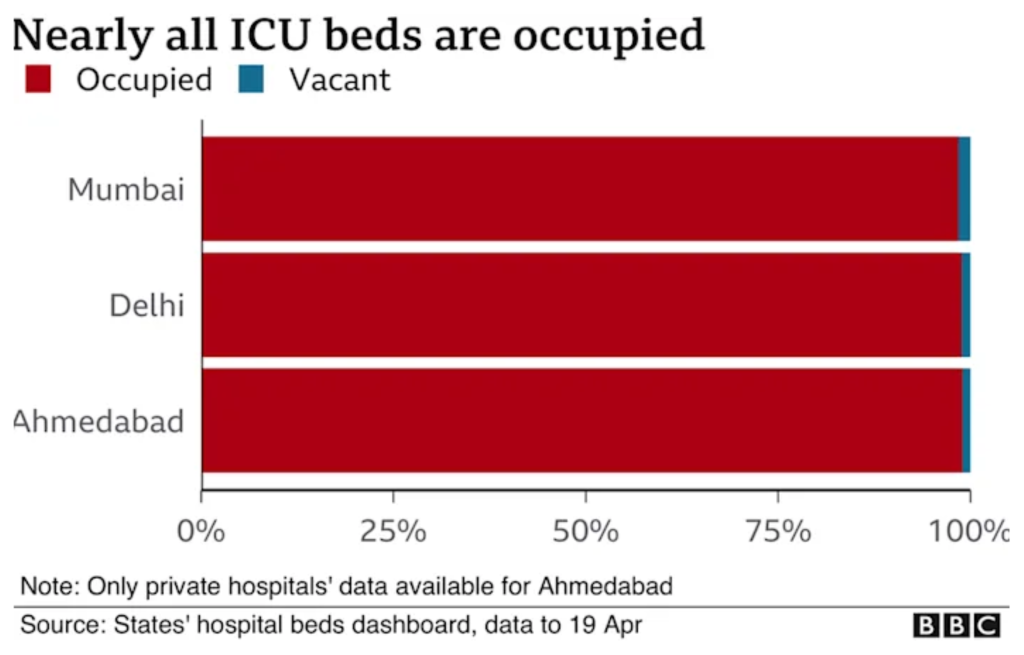
Sharp rise in cases
The rise in case numbers has been exponential in the second wave.
On 18 June last year, India recorded 11,000 cases and in the next 60 days, it added 35,000 new cases on average every day.
On 10 February, at the start of the second wave, India confirmed 11,000 cases – and in the next 50 days, the daily average was around 22,000 cases. But in the following 10 days, cases rose sharply with the daily average reaching 89,800.
Experts say this rapid increase shows that the second wave is spreading much faster across the country. Dr A Fathahudeen, who is part of Kerala state’s Covid taskforce, said the rise was not entirely unexpected given that India let its guard down when daily infections in January fell to fewer than 20,000 from a peak of over 90,000 in September.
Big religious gatherings, the reopening of most public places and crowded election rallies are being blamed for the uptick. Dr Fathahudeen said there were warning signs in February but “we did not get our act together”.
“I said in February that Covid had not gone anywhere and a tsunami would hit us if urgent actions were not taken. Sadly, a tsunami has indeed hit us now,” he added.
“A false sense of normalcy crept in and everybody, including people and officials, did not take measures to stop the second wave.” [more]
Covid-19 in India: Why second coronavirus wave is devastating
